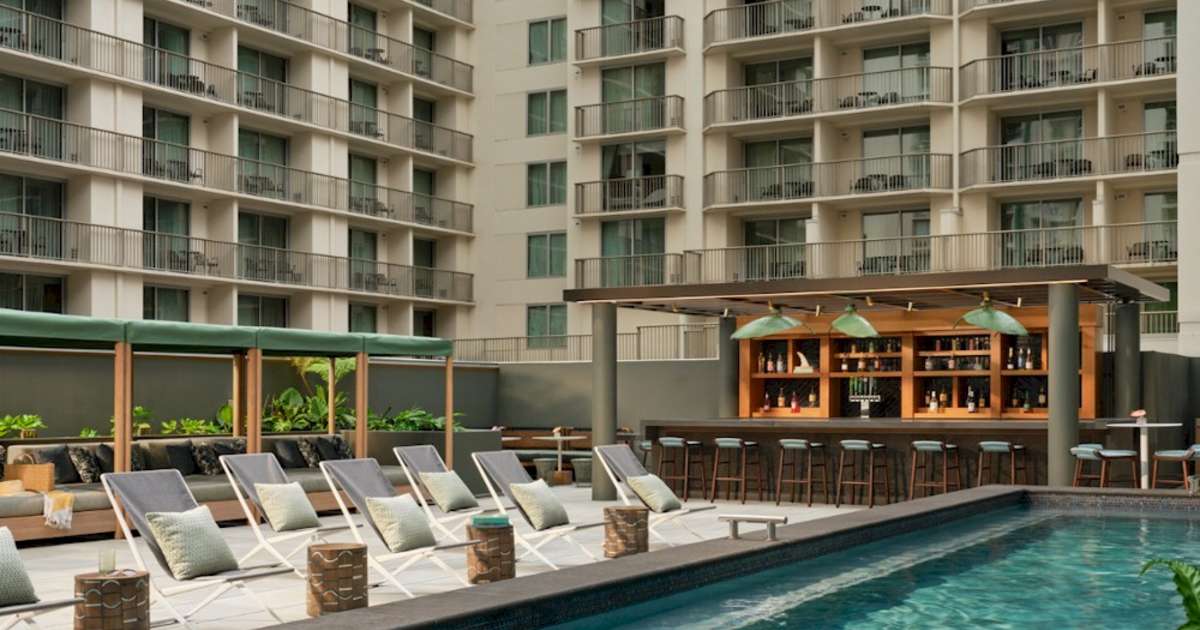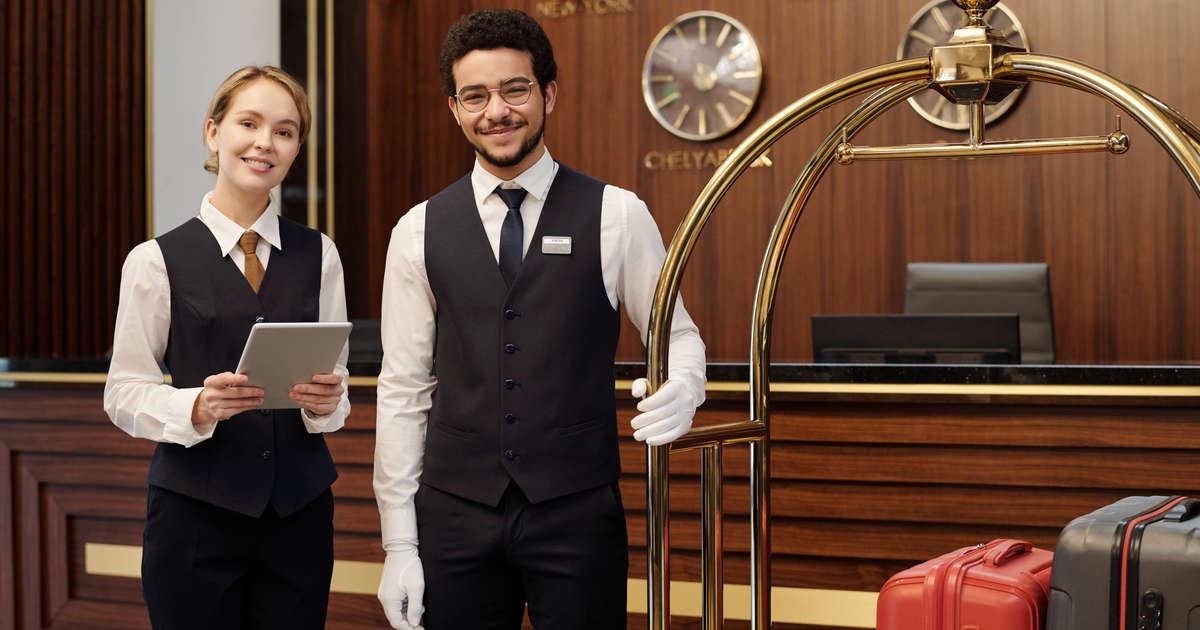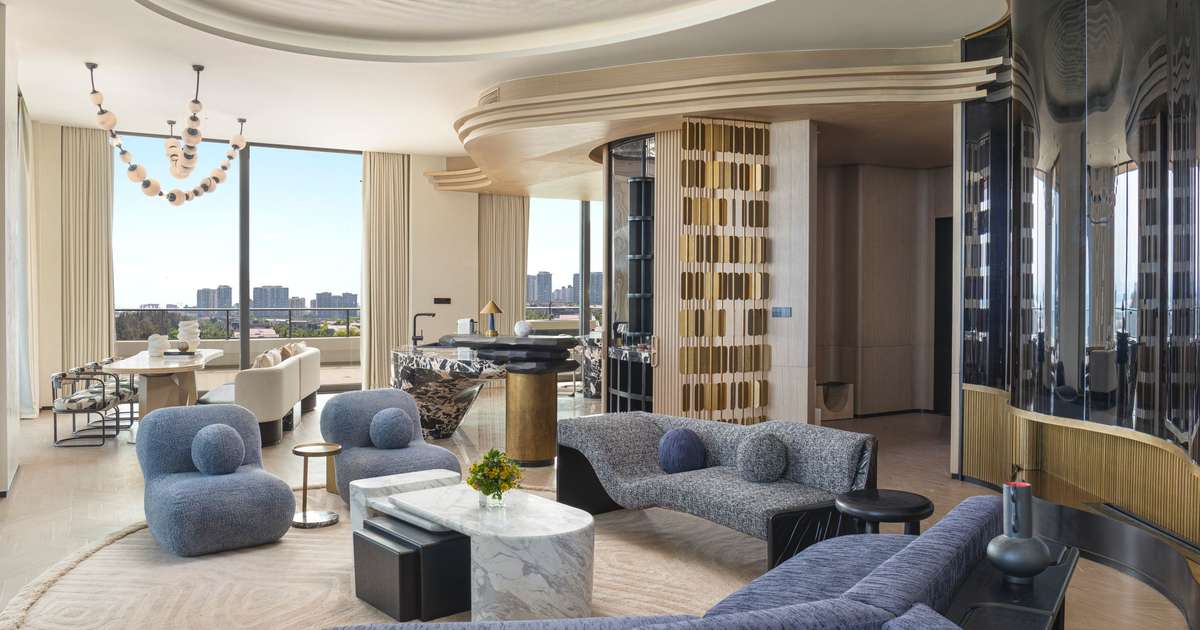
At the end of last year, Highgate Hotels reached our goal to have 150 third-party eco-certified hotels by 2024. We also published our latest environmental and social governance (ESG) report, which details forward-thinking initiatives involving green concrete, reforestation and regenerative agriculture, and using leftover cooking oil for sustainable aviation fuel production.
We’ve installed more than 165 electric vehicle charging stations, installed thousands of solar panels (which have generated nearly 3.5 million kWh of renewable energy), invested in offsite wind and solar energy, and planted tens of thousands of trees.
We are certainly proud of all the time, work, collaboration and innovation that goes into our industry-leading ESG efforts. But 2024 also had its challenges–and, in the aftermath of the 2023 Maui wildfires, it was also the year our ESG efforts became more personal than ever. My office is located in Honolulu, and Highgate operates 16 hotels across the Hawaiian islands. Our Royal Lahaina Resort was the first hotel to open its doors to displaced residents after the fires (which were greatly exacerbated by abnormally dry, hot weather).
Given economic uncertainties, 2024 was also a reminder that important ESG work comes in all forms. Sometimes important progress comes thanks to smaller, cost-conscious programs; other times, we get the opportunity to pilot big, ambitious sustainability initiatives. ESG is a complex, always-changing undertaking that requires a mix of tactics and an ability to adapt to changing conditions. My team and I learned many lessons about responsibly building, renovating and operating hotels over the last 12 months; here are some highlights.

 At the Twin Fin Hotel in Waikīkī, Highgate partnered with Remanufacturing and Design Group to refurbish existing dressers, nightstands and bathroom vanities. — Photo by Highgate Hotels, L.P.
At the Twin Fin Hotel in Waikīkī, Highgate partnered with Remanufacturing and Design Group to refurbish existing dressers, nightstands and bathroom vanities. — Photo by Highgate Hotels, L.P.
The Cost-Impact Juggle
An unpredictable economy has become our industry’s new normal over the last half decade. While builders, developers, owners and operators are always mindful of costs, today’s hotel projects are exceedingly cost-conscious, regardless of scale or hotel class. And that means some of our grander ideas for building or renovating in a responsible way simply won’t be approved because they require significantly more capital than the traditional way of doing things, often labeled the “green premium”.
In a perfect world, every project we embark on would fully prioritize stewardship of the earth and all its inhabitants. But I also understand the terrific economic pressures impacting every part of our business. So, until sustainable products and materials are cost neutral, we’ll need to continue looking for cost-effective ways to reduce our environmental impact. For example, for every large-scale renovation project, we now ask contractors to share their waste-management plans as part of the RFP process; we will be incorporating this practice into every RFP moving forward. Often we’ll be able to divert waste in creative and less-expensive ways–like recycling bathroom fixtures or donating furniture to local nonprofit organizations. Or, if a project’s waste management plan adds to the total cost, we’ll be able to plan ahead for proper reuse and recycling.
Through simple operational adjustments like installing low-flow shower heads and LED light bulbs, we’ve achieved measurable sustainability gains with little to no green premium. We’ve implemented smart technology to automate and streamline temperature control at several hotels, worked to eliminate single-use plastics, and we now only offer reef-safe sunscreen at all Highgate’s Hawaii and Key West properties. At the Westin Las Vegas and other full-service properties, the installation of water bottle refill stations has reduced plastic consumption and increased socialization in the lobby.
While scaling back might feel disappointing, we know that impact doesn’t always need to come from grand gestures. So we stay committed to consistently measuring and reducing our impact, finding new ways to do more with less, and making decisions that balance financial responsibility and environmental stewardship. Greening your business doesn’t always need to be a visible, high-profile effort—it just needs to be effective. And sometimes effectiveness means focusing on the actions that make sense both environmentally and financially.
Go Big When You Can
ith that said, sometimes a new build or a large-scale renovation presents an opportunity to pilot new and ambitious ESG strategies. While it’s true that some of these solutions come at a higher initial cost, they often pay dividends in the long run. And hotel construction is at an all-time high, which means hospitality companies across the world will have more opportunities to incorporate cutting-edge technologies and tactics.
At the recently opened Romer House Waikīkī, for example, we became the first large hotel owner and manager to complete a green concrete project. We utilized CarbonCure ’s cutting-edge technology to inject captured carbon dioxide into fresh concrete while it was being mixed. This practice maintains the concrete’s compressive strength and can enable reductions of carbon-intensive cement. On average, CarbonCure helps concrete producers reduce between 15 and 25 pounds of carbon dioxide per cubic yard of ready-mix concrete. (A standard high-rise commercial structure built with CarbonCure concrete would save 680 metric tons of carbon dioxide, which is equivalent to the annual carbon sequestration capacity of 889 acres of forest.)
This technology decreased the hotel’s embodied carbon emissions; it also sets a clear example for the rest of the industry. And it’s an important issue: According to ESG benchmark organization GRESB, the built environment is responsible for 42 percent of annual GHG emissions, with 15 percent of that figure coming from building materials and construction processes.
Another big, bold project recently debuted just down the road, at the Twin Fin Hotel in Waikīkī. Instead of purchasing new guest-room furniture, we partnered with Remanufacturing and Design Group to refurbish existing dressers, nightstands and bathroom vanities. We also partnered with nonprofit organization Parley for the Oceans to create a striking oversized lobby sculpture made from waste collected from oceans.
Not every project can be a Twin Fin. But when we get an opportunity to apply learnings from that ambitious project (or, as we call it, “Twin Fin-ification”), we take it gladly. We’re still measuring the impact of both these projects and will continue replicating their successes. In fact, we’re currently building Twin-Fin-inspired model rooms at three hotels across Highgate’s portfolio that will be adopting a similar approach. These model rooms showcase the innovation, beauty and vast potential of rehabbing furniture rather than throwing everything away and starting from scratch.

 Highgate partnered with Green Standards to responsibly remove used furniture and materials during a renovation of the M Social Hotel in NYC, reducing carbon emissions. — Photo by Highgate Hotels, L.P.
Highgate partnered with Green Standards to responsibly remove used furniture and materials during a renovation of the M Social Hotel in NYC, reducing carbon emissions. — Photo by Highgate Hotels, L.P.
Resilience is the New Standard
Climate change is, quite literally, at our front door–so the urgency to build and renovate responsibly is one we take very seriously. Highgate owns and operates properties on beachfronts and in the path of devastating storms. We’re also working to renovate hotels in ski areas that, for the first time in their history, are finding themselves in need of air conditioning in order to remain open through the summer months. On Florida’s Gulf Coast, the Highgate-managed TradeWinds resort was hit by back-to-back Hurricanes Helene and Milton (the resort has since fully recovered and resumed normal operations).
These harsh realities mean we’re thinking not just about reducing our environmental impact–but also about how we can future-proof our buildings to better withstand extreme weather. While building for resilience has taken on new urgency, the materials we often rely on to build resilient structures (like concrete and steel) can also be some of the most carbon intensive. That means innovative solutions like CarbonCure are absolutely vital for building safe, healthy, future-proof buildings. But we’re not just weatherproofing hotels; we’re working to create long-term solutions that, eventually, will reduce operational spending–even if that means higher up-front construction costs.
Collaborate, Innovate, Repeat
Our ESG journey is just that: a journey. And we can’t do it alone. One of the most valuable lessons we’ve learned is the importance of collaboration with our suppliers, contractors and an increasing number of ESG partners. We also work with others in the hospitality industry to share best practices (i.e., through our involvement with Sharing best practices through our involvement with AHLA’s Sustainability Committee and the World Sustainable Hospitality Alliance).
Our partnership with data and analytics company MindClick, for example, is focused on eliminating chemicals of concern and optimizing our supply chain. We completed seven projects in partnership with MindClick (for a total value of more than $385 million), with an eighth scheduled for completion this spring. That partnership has helped measure our impact, track improvements and identify areas for improvement. And those insights have helped us make steady, meaningful steps forward in both sustainability and operational efficiency.
In New York City, we partnered with Green Standards to responsibly remove used furniture, fixtures and equipment from a renovation of the M Social Hotel. This partnership successfully decommissioned eight tons of chairs, lamps, curtains and headboard covers, resulting in more than $10,000 worth of donations to local nonprofit organizations like Habitat for Humanity. The initiative also diverted 97.6 percent of waste from landfills and reduced carbon emissions by nearly 300 tons.
New, forward-thinking partnerships like these are helping Highgate achieve ambitious ESG goals. But they’re also helping set the tone for collaborations with our existing partners. We’re seeing increasing support from suppliers and contractors who are willing to try new, more sustainable approaches in order to continue working with us.
Some of our contractors initially hesitated when we started requiring more sustainable materials and waste-management practices. But over time they’ve embraced this new way of doing business and even started seeing the benefits. It’s a reminder that even in an industry as large and complex as hospitality, we can lead by example and create positive change.


